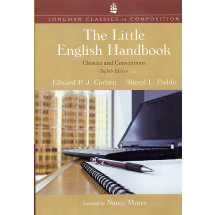Table of Contents
Preface
List of Tables
List of Figures
Publisher's Acknowledgements
1. INTRODUCTION: ISSUES IN HISTORICAL SOCIOLINGUISTICS
1.1 Sociolinguistics Backprojection?
1.2 Contemporary Perceptions of Usage
1.3 Sociohistorical Reconstruction
1.4 Research Topics
2. SOCIOLINGUISTIC PARADIGMS AND LANGUAGE CHANGE
2.1 Sociolinguistic Paradigms
2.2 Descriptions and Explanations
2.3 Theoretical Pluralism
2.4 Theory in Historical Sociolinguistics
3. PRIMARY DATA: BACKGROUND AND INFORMANTS
3.1 Data in Historical Sociolinguistics
3.2 Generic and Temporal Concerns
3.3 Tudor and Stuart England
3.4 The Corpus of Early English Correspondence (CEEC)
4: REAL TIME
4.1 The S-Shaped Curve
4.2 Timing Linguistic Changes
4.3 Previous Studies
4.4 The Time Courses of Fourteen Changes
4.5 Conclusion
5: APPARENT TIME
5.1 Ongoing Change in Relation to Age
5.2 Apparent Time in Historical Research
5.3 Previous Studies
5.4 Age Cohorts and Individual Participation in Ongoing Changes
5.5 Conclusion
Appendix 5.1: The informants for Figure 5.1. Subject YOU vs. YE
Appendix 5.2. Informants for Figure 5.2. 3rd sg -s VS. -TH
Appendix 5.3. Informants for Figure 5.3. Which Vs. the Which
6. GENDER
6.1 The Gender Paradox
6.2 Historical Reconstruction
6.3 Previous Studies
6.4 Gender and Real-Time Linguistic Change
6.5 Conclusion
7. SOCIAL STRATIFICATION
7.1 Social Order in Sociolinguistics
7.2 Reconstructing Social Order
7.3 Previous Studies
7.4 Social Order in Language Change
7.5 Conclusion
8. REGIONAL VARIATION
8.1 Regional Dialects in England Today
8.2 Reconstructing Regional Differences in Tudor and Stuart England
8.3 Previous Empirical Studies
8.4 Regional Variation and Late Middle and Early Modern English
8.5 Conclusion
9. HISTORICAL PATTERNING OF SOCIOLINGUISTIC VARIATION
9.1 Modelling Variability
9.2 Modelling Sociolinguistic Variation Historically
9.3 Previous Empirical Studies
9.4 VARBRUL Analyses of Five Historical Changes
9.5 Summary and Conclusions
10. CONCLUSION
10.1 The Changes in Retrospect
10.2 The Principle of Contingency
10.3 Uninterrupted Continuity of Change?
Appendix I: Methodology: how to Count Occurrences
Appendix II: Numerical Information
Appendix III: The Letter Collections
References
Author Index
Subject Index












